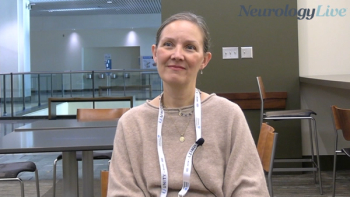
High Dose Fordadistrogene Movaparvovec Improves NSAA, Muscle Volume in Patients With DMD
The trial compared data from external controls including a recent domagrozumab null study and a propensity score weighted comparison.
Fordadistrogene movaparvovec (Pfizer; PF-06939926) was associated with clinically meaningful preservation of motor function in participants with
Data from the trial were presented in a late-breaking session at the
“Two years after dosing, high dose fordadistrogene movaparvovec in this phase 1 study supports a clinically meaningful difference in motor function in ambulatory participants with DMD versus external controls with similar pretreatment characteristics. The change 2 years after dosing varied by age and was largest in those aged 6-7 years,” Shieh said during his presentation.
The data were from 16 ambulatory male patients with DMD that received the high dose of 2E14 vg/kg intravenous fordadistrogene movaparvovec. These participants had a mean age of 8.1 years (standard deviation [SD], 1.5), a mean north star ambulatory assessment (NSAA) score of 25.8 (SD, 4.6), and a mean rise from floor velocity of 0.283 meters per second (SD, 0.082).Ten patents were aged 8 to 12 years and 6 were aged 6 to 7 years.
READ MORE:
Investigators used the cTAP model to develop a predictive control comparison. The model was developed with data from over 400 participants with DMD and the predicted controls had similar baseline characteristics as the trial participants.
Compared with external controls, trial participants had a 2.4-point difference (95% CI, –0.6 to 5.4) in NSAA scores after 2 years. Stratifying by age, the patients aged 6-7 years showed a 2.5-point difference (95% CI, 0.4-4.7) on NSAA scores and the patients aged 8-12 years showed a 2.3-point difference (95% CI, –2.0 to 6.5) on NSAA scores after 2 years.
Investigators also calculated a propensity score weighted comparison against patients with similar baseline characteristics in a recent null phase 2 trial (NCT02310763) evaluating domagrozumab. With this method of comparison, fordadistrogene movaparvovec was associated with a difference of 0.8 points (95% CI, –2.8 to 3.6) after 2 years. With age stratifying, patients aged 6-7 years showed a 4.1 point-difference (95% CI, 1.0-7.2) after 2 years and patients aged 8-12 years showed a negligible –0.4-point difference (95% CI, –5.2 to 3.4) after 2 years.
Muscle MRIs were performed and there was an average increase in muscle volume at the 1-year mark, which was mostly sustained at the 2-year mark. Specifically, in the high dose group from which data were being presented, there was a mean 9.0% increase (SD, 13.5) in muscle volume at 1 year and a 7.4% increase (SD, 16.1) at 2 years. The low dose group had a 3.3% increase (SD, 8.0) at 1 year and a –7.7% decrease (SD, 21.6) at 2 years. The external reference group, from the domagrozumab trial, had a mean 2.7% increase (SD, 8.3) at 1 year and a 2.4% increase (SD, 12.1) at 2 years. Placebo data, only available at the 1-year mark, showed no change.
The gene therapy’s safety profile was fairly consistent with other DMD gene therapies, with 3 serious adverse events (AEs), previously disclosed, considered related to treatment. These were dehydration, acute kidney injury, and thrombocytopenia, which all resolved within 15 days. Common AEs included vomiting, nausea, pyrexia, thrombocytopenia, decreased appetite and fatigue.
“Comparisons of outcomes across nonrandomized groups can be confounded by differences in the patent populations. Adjustment for multiple known prognostic factors can mitigate but not entirely avoid this bias,” Shieh concluded. “This data supports the assessment of fordadistrogene movaparvovec in randomized placebo-controlled studies. I think looking at participants ages 4 through 7 would be the main focus, which is the focus of the ongoing studies.”
REFERENCE
Shieh PB, Butterfield RJ, Munotni F, et al. Two-year clinical outcomes with fordadistrogene movaparvovec for Duchenne muscular dystrophy (DMD) and contextualization with external controls. Presented at: ASGCT 2023 Annual Meeting; May 16-20; Los Angeles, California.
Newsletter
Stay at the forefront of cutting-edge science with CGT—your direct line to expert insights, breakthrough data, and real-time coverage of the latest advancements in cell and gene therapy.











































